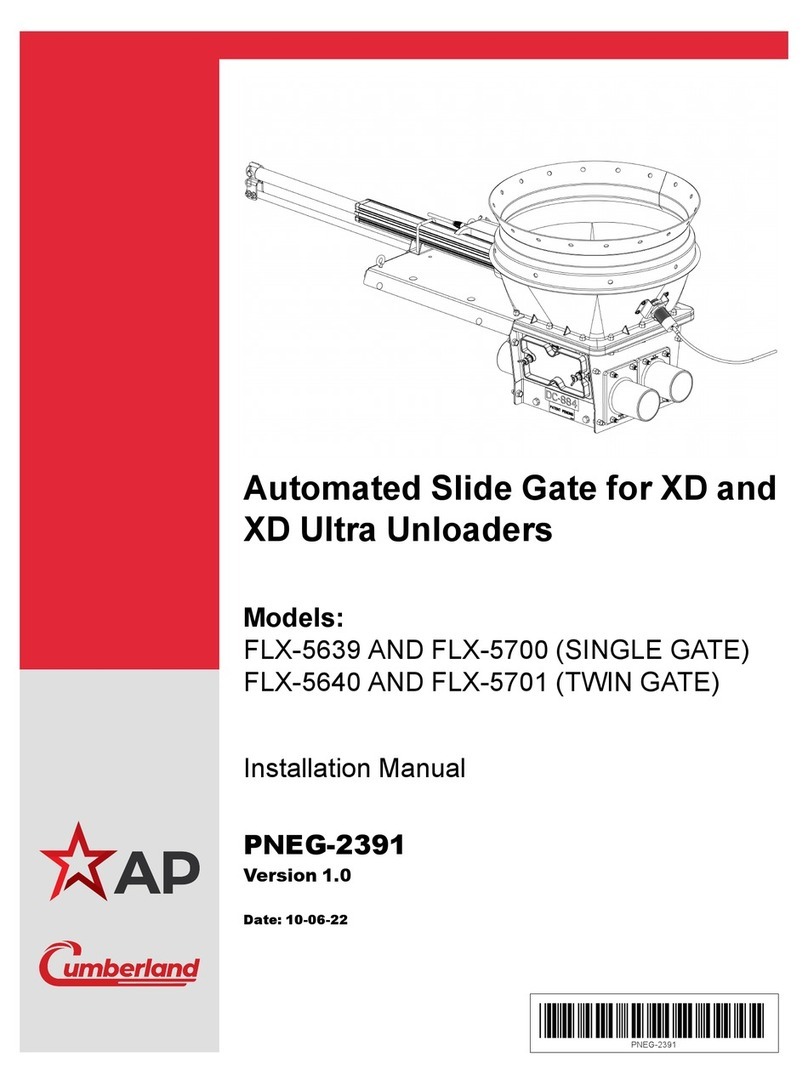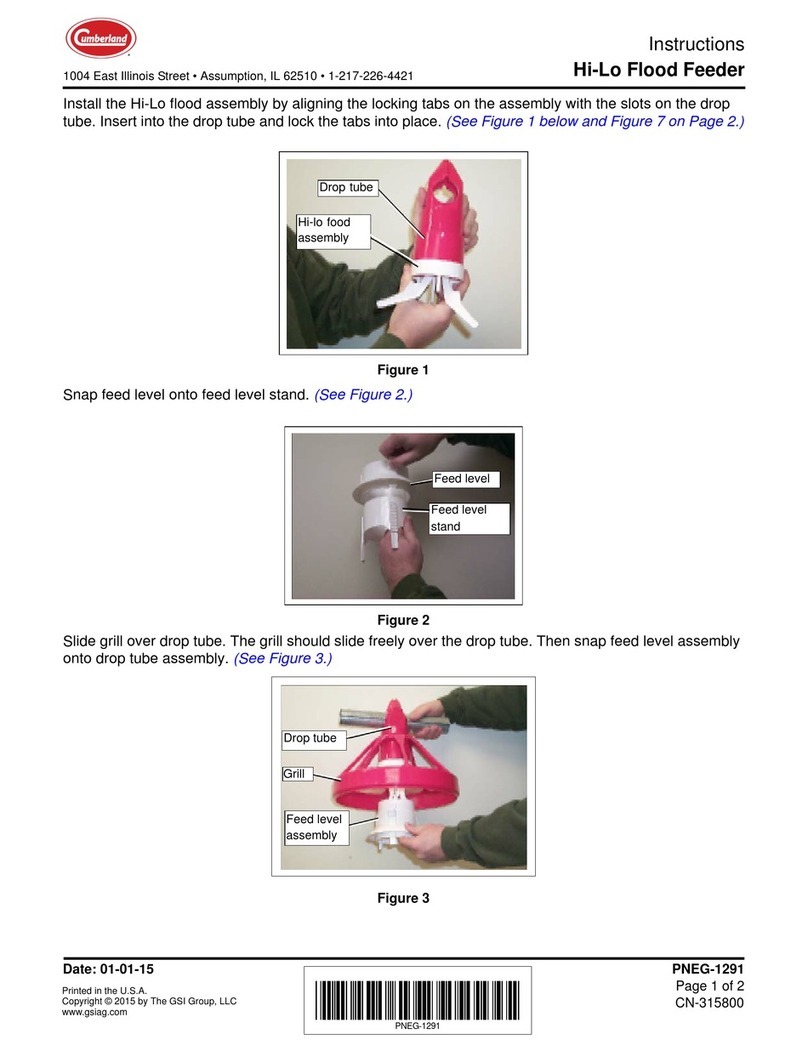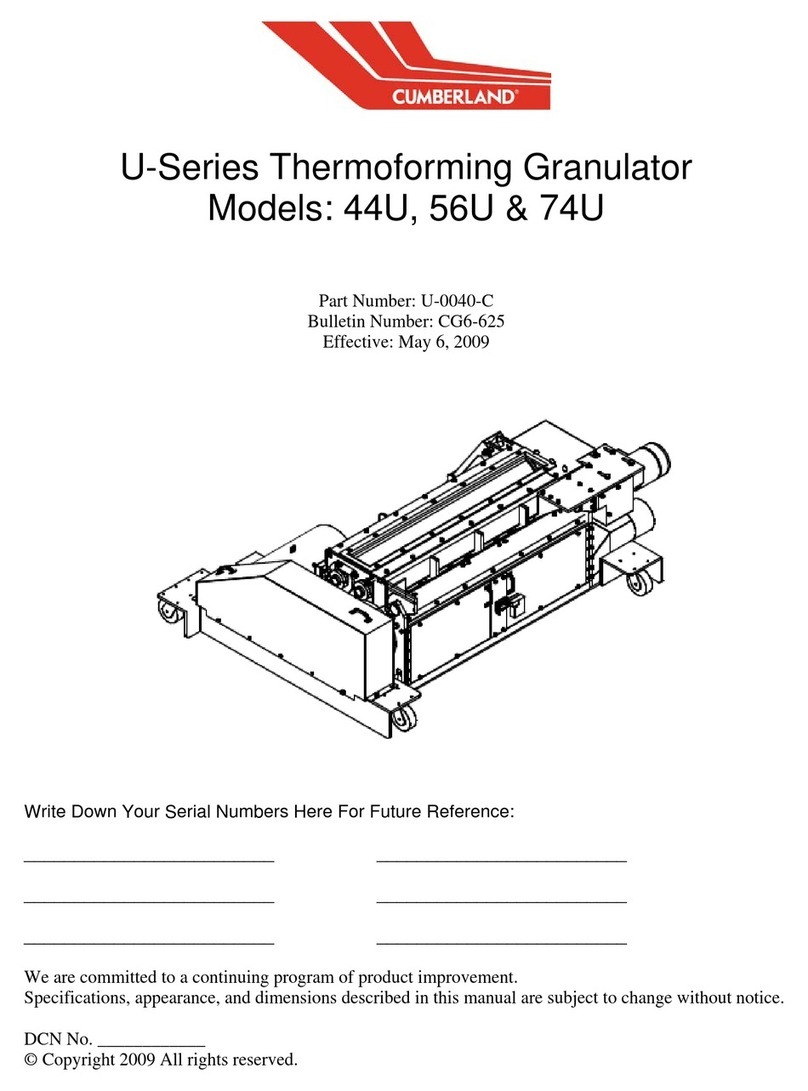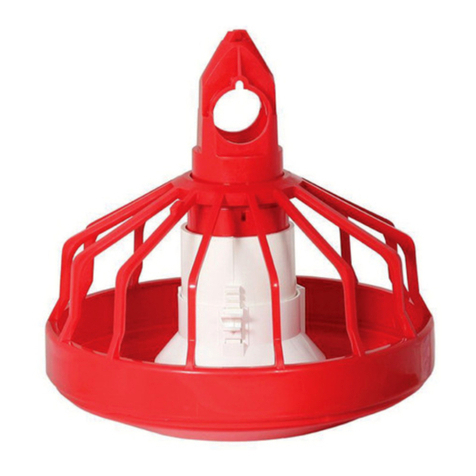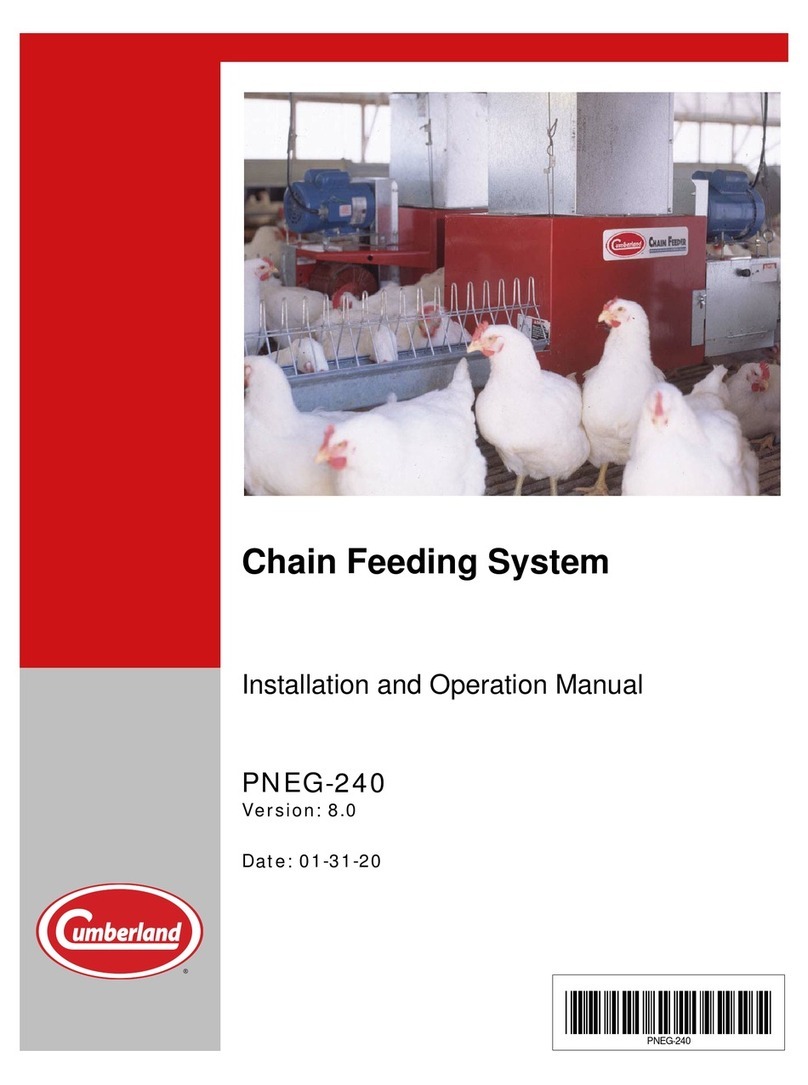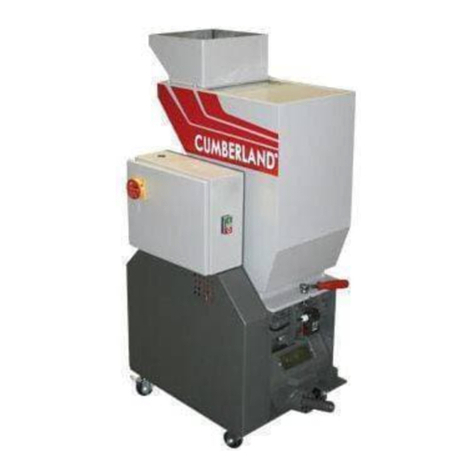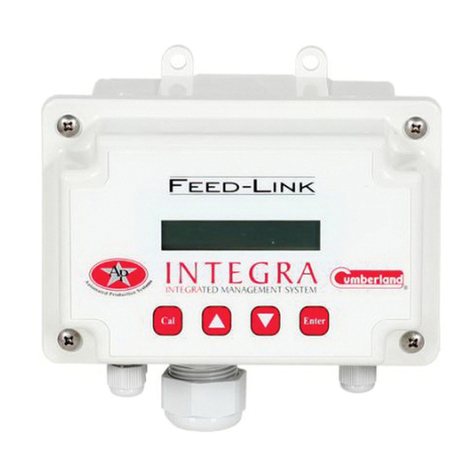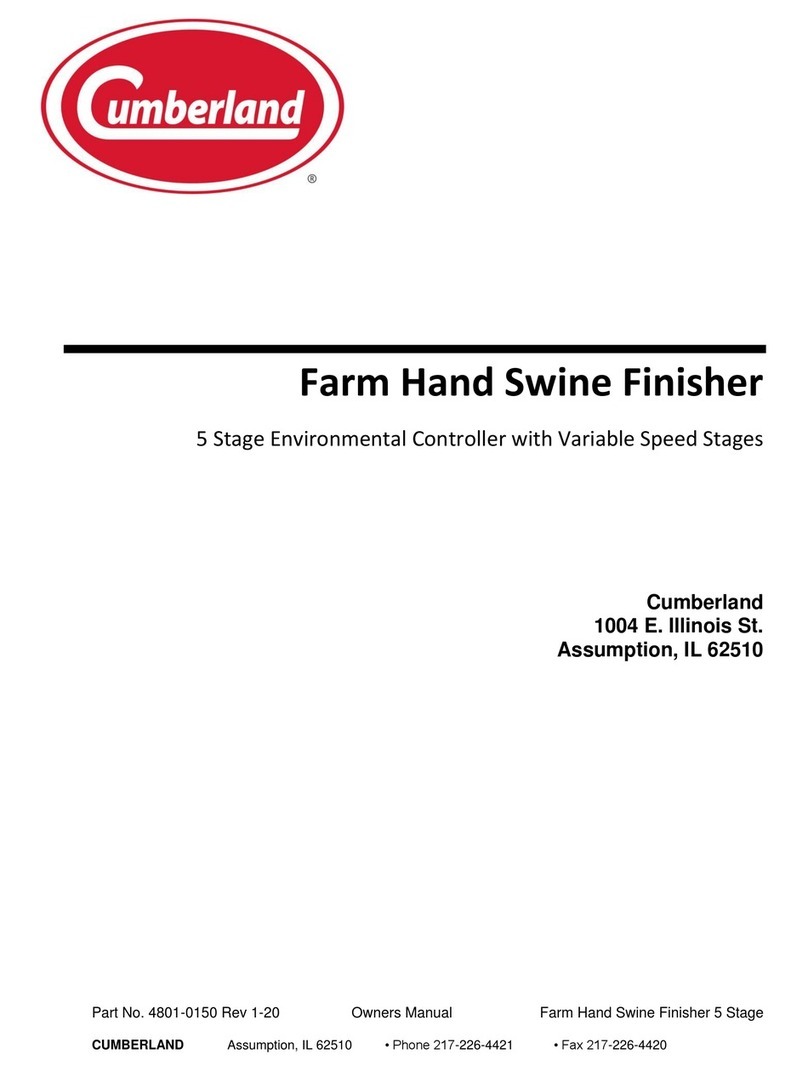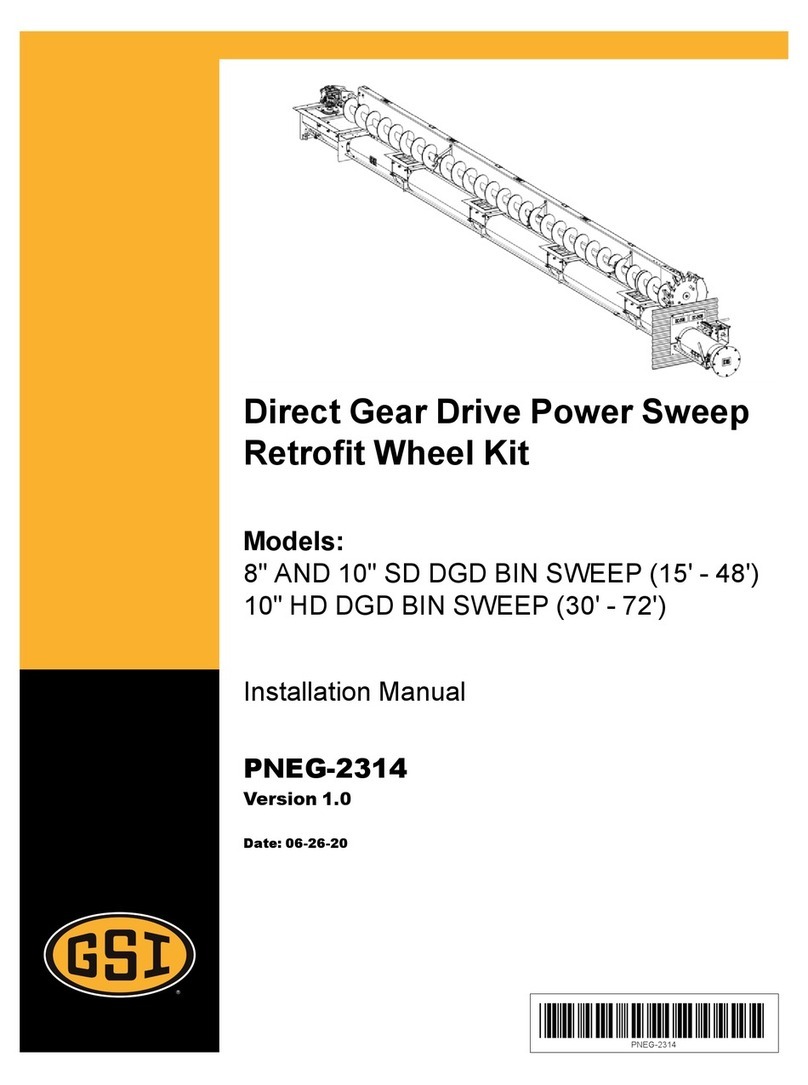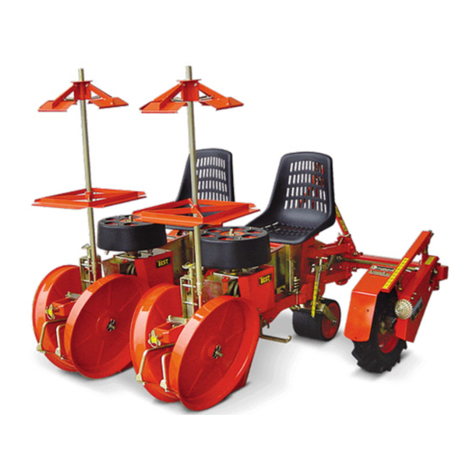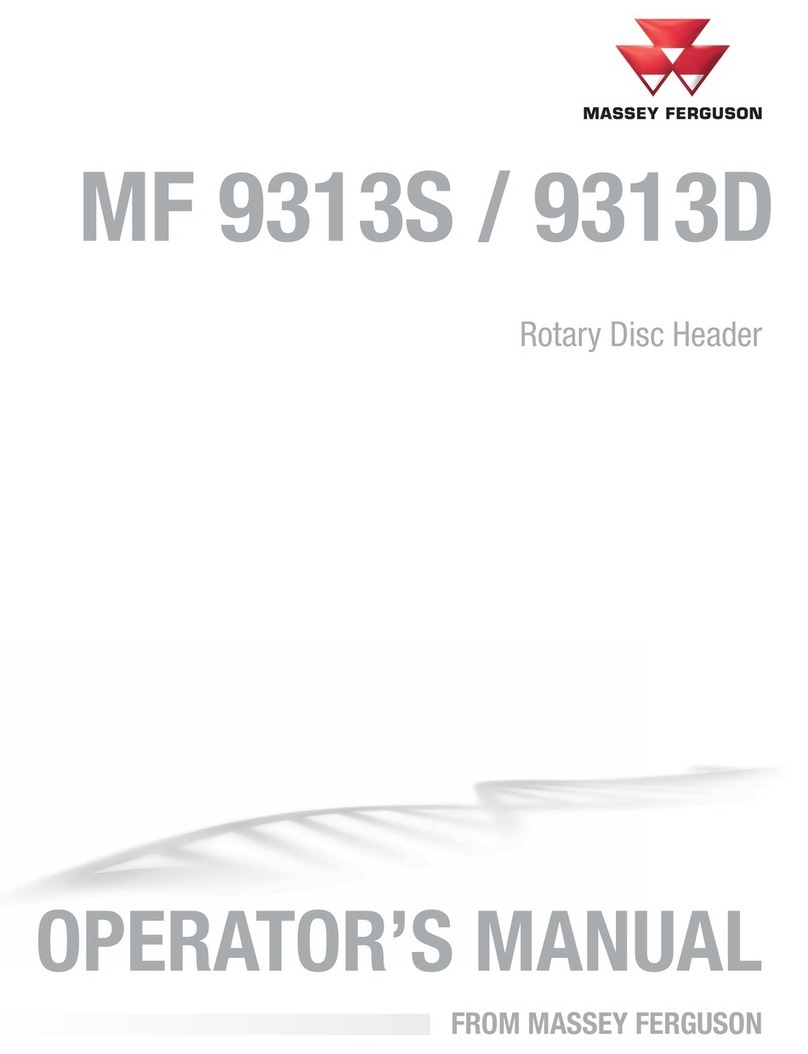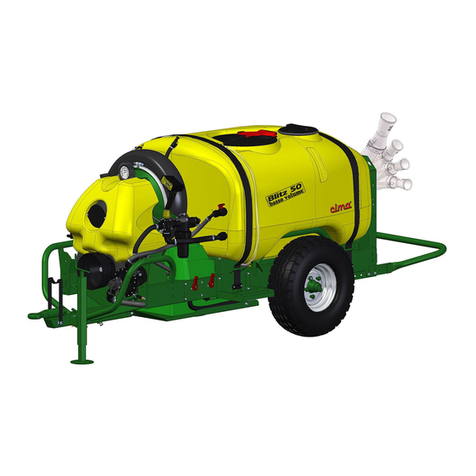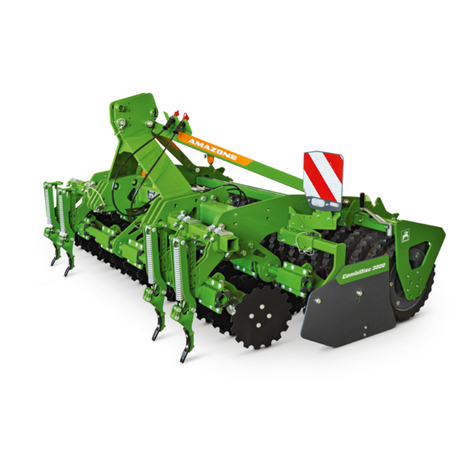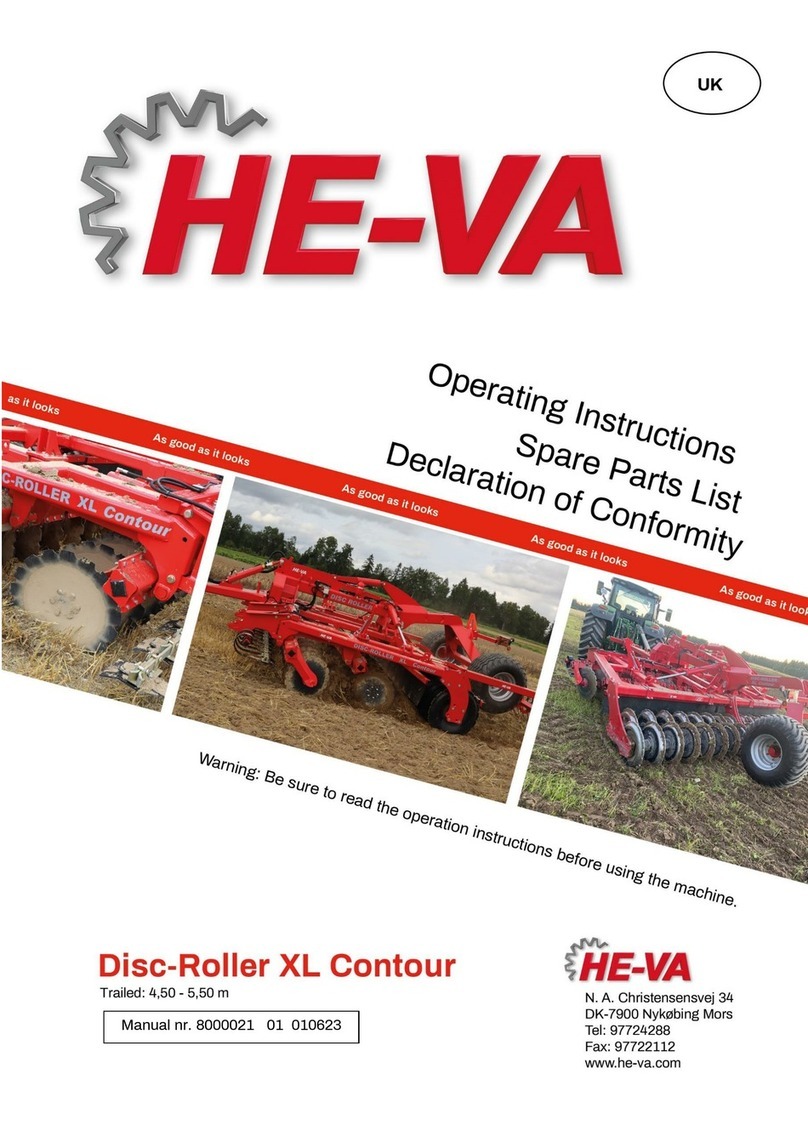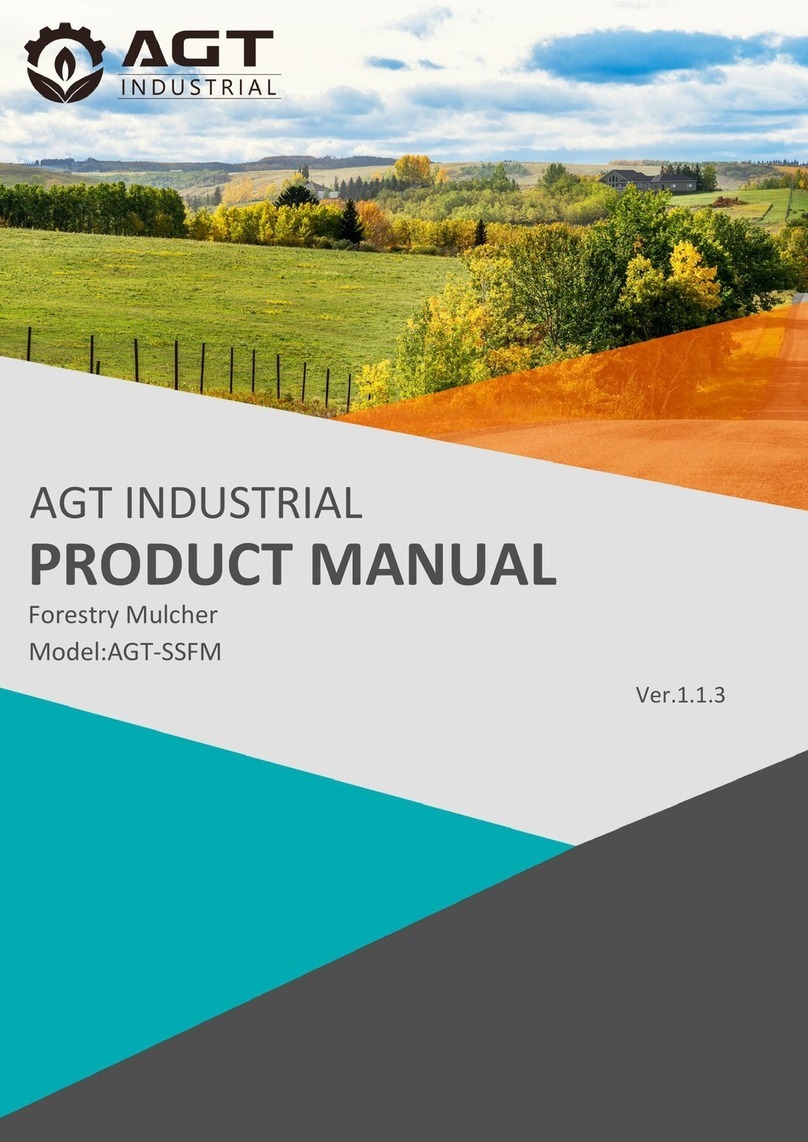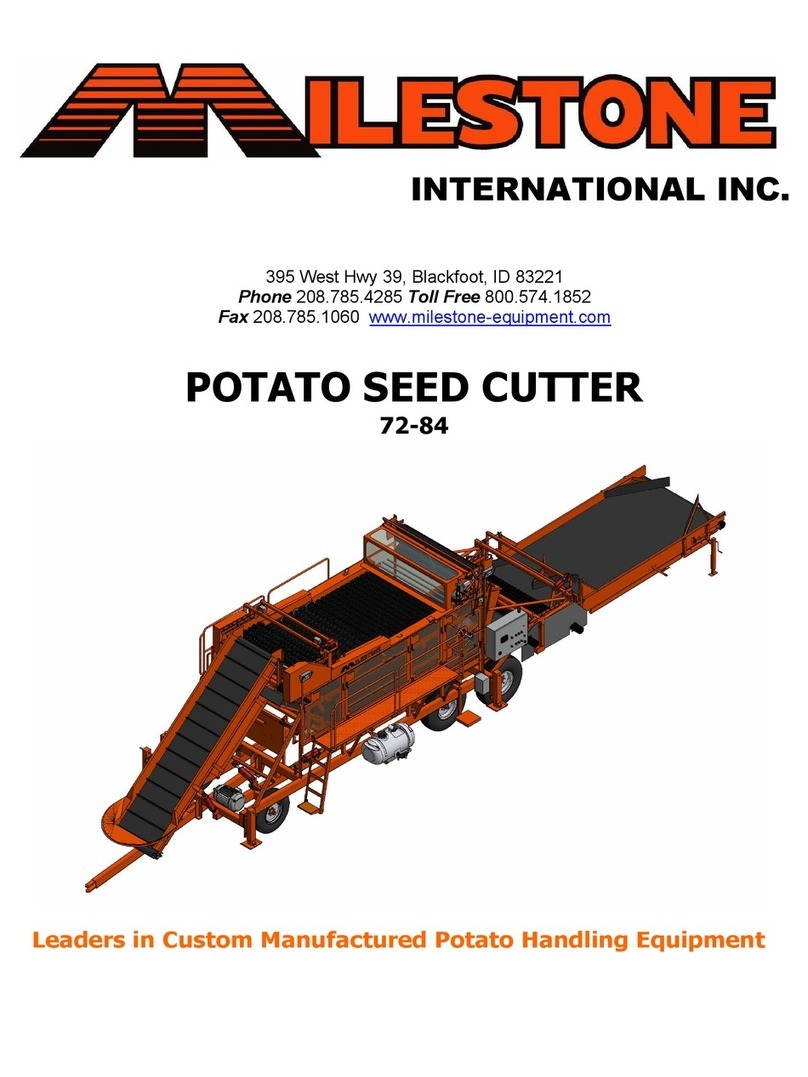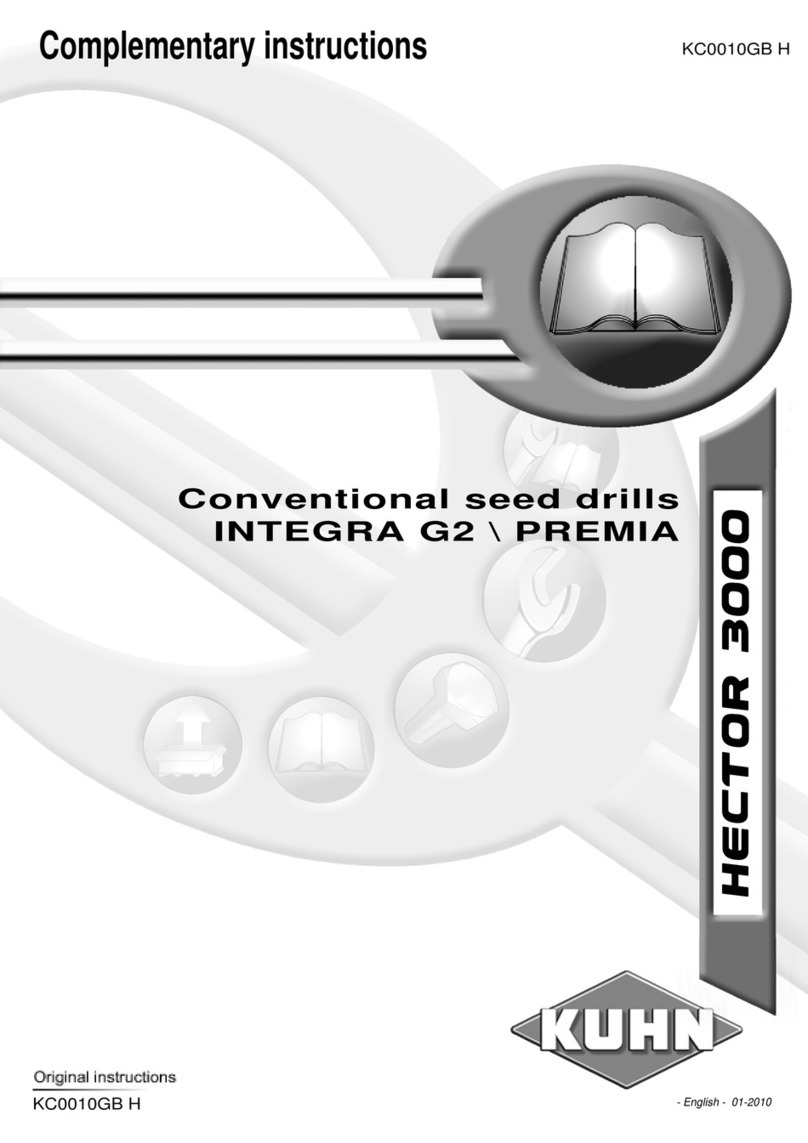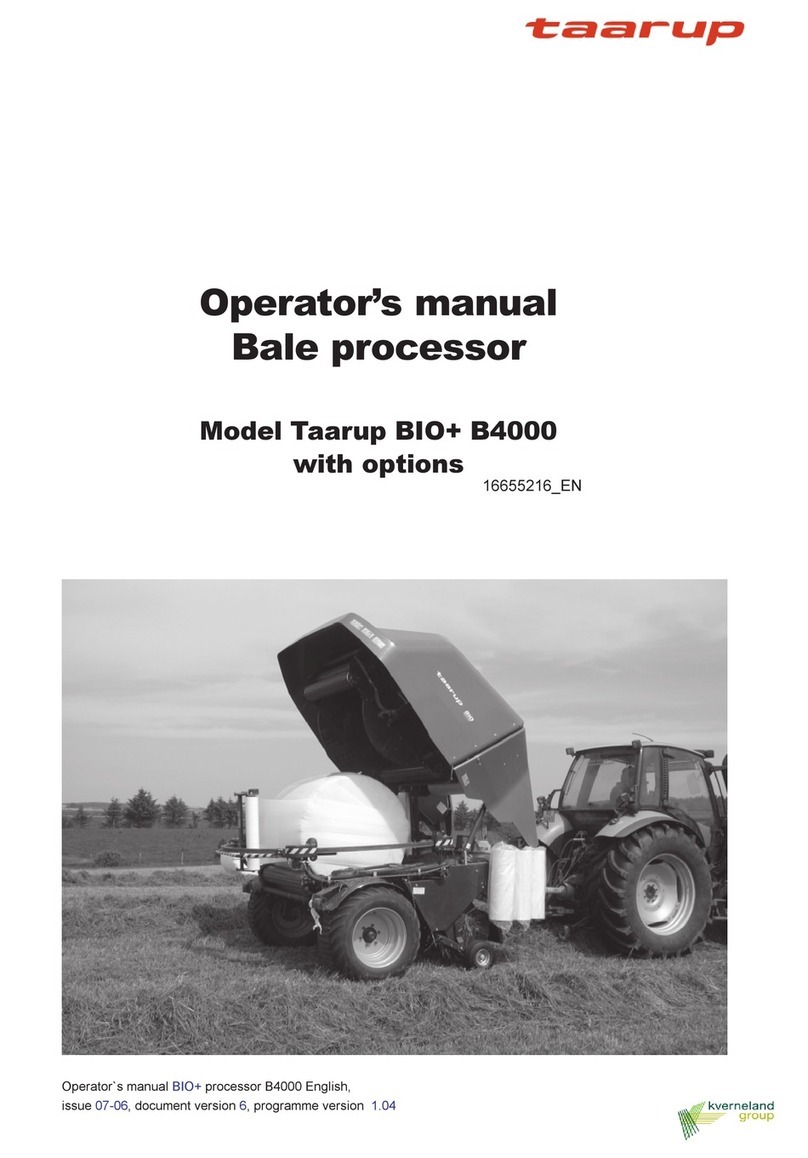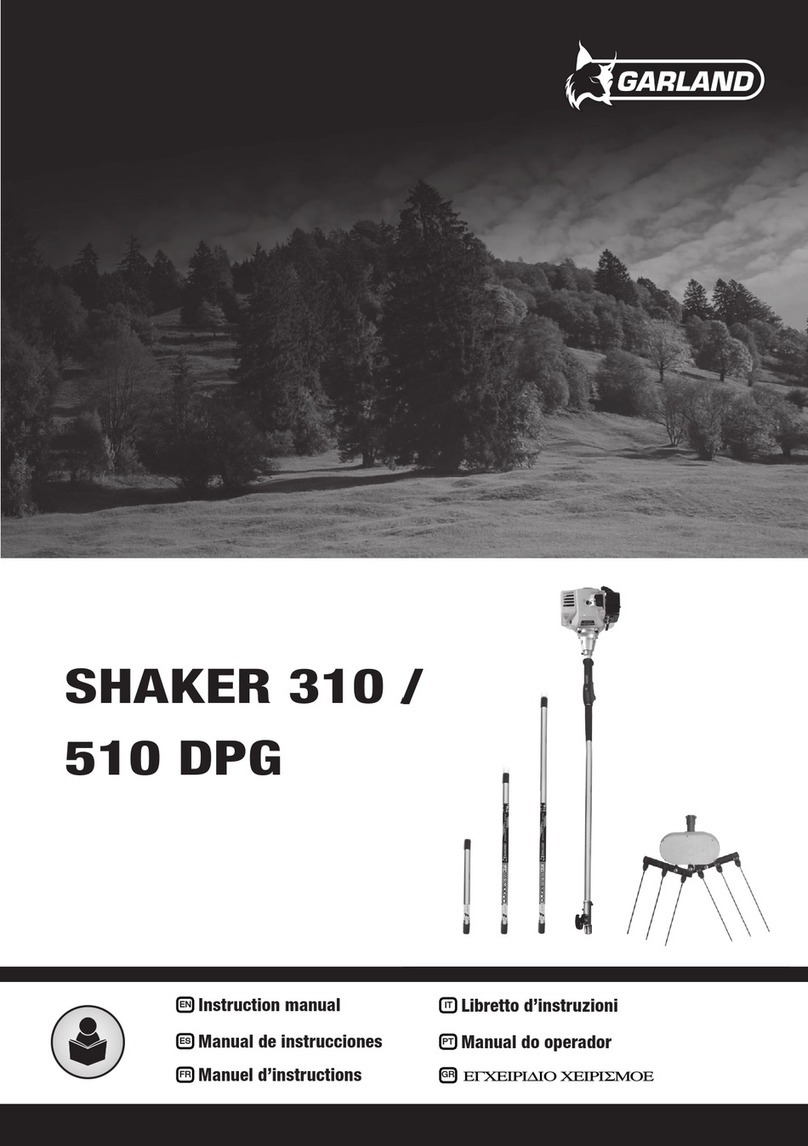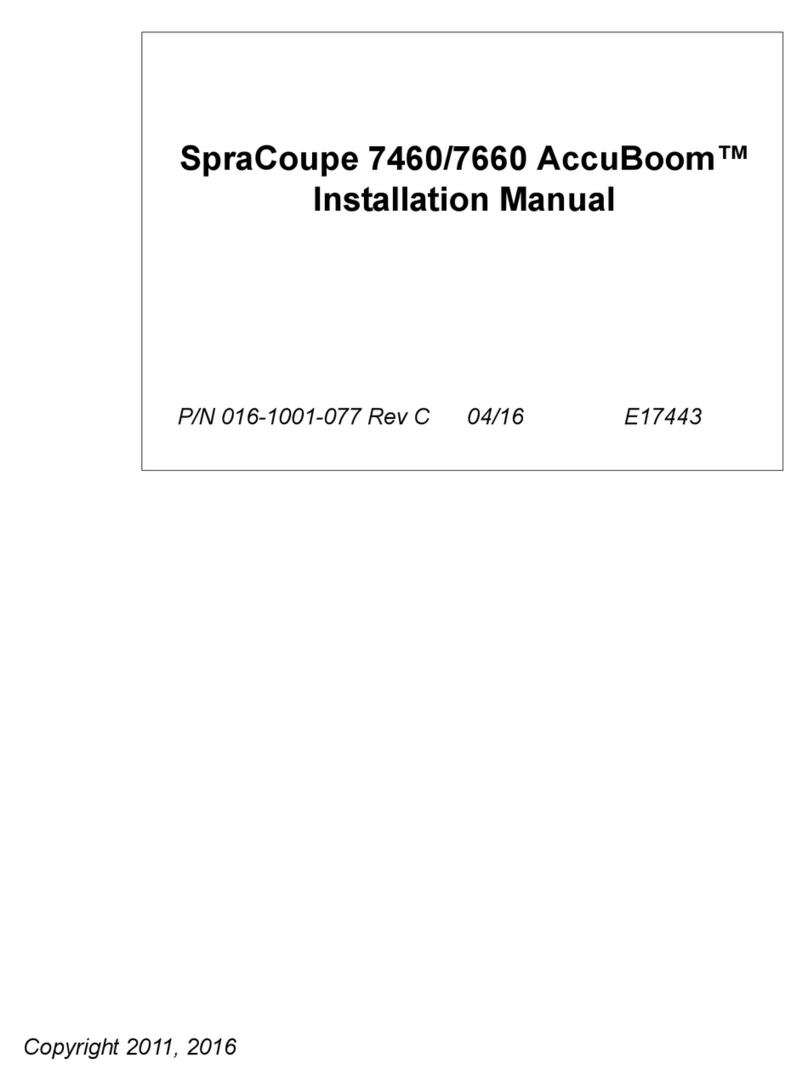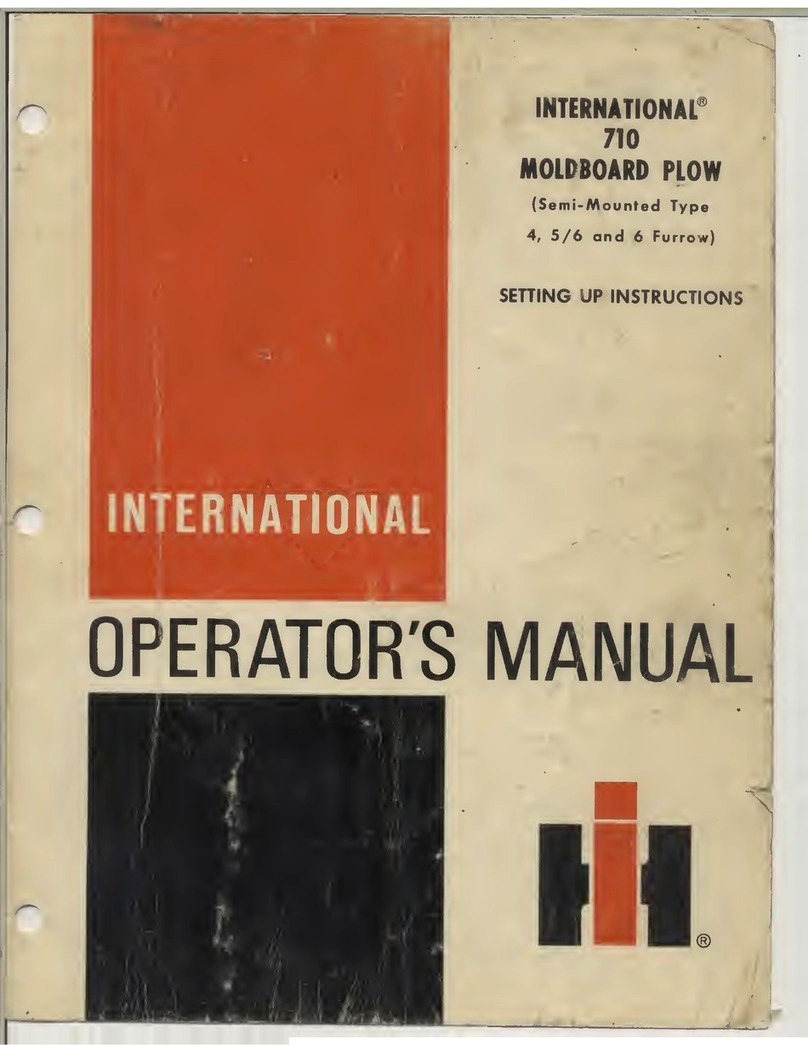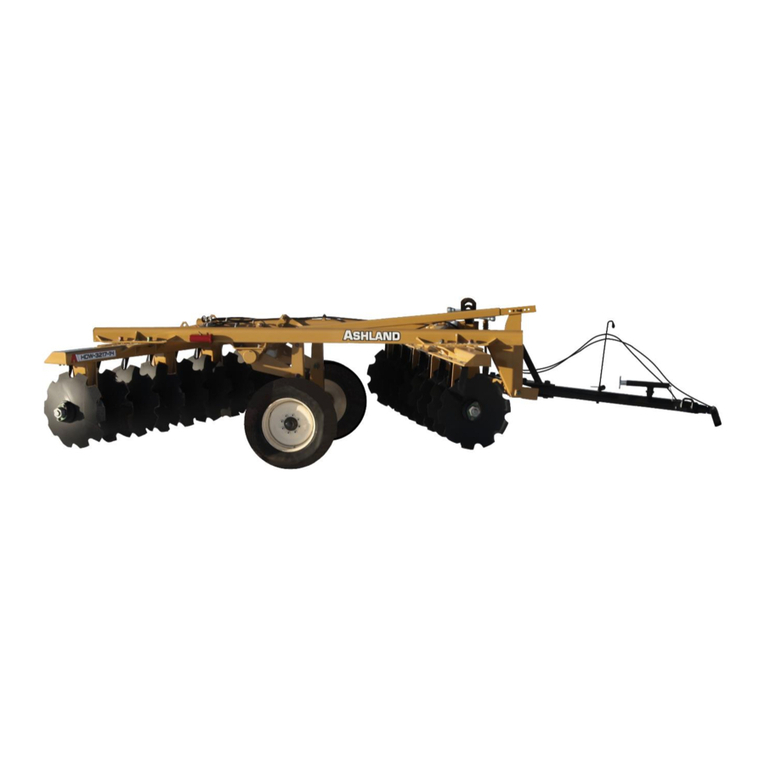
Table of Contents
PNEG-250 Hi-Lo and PRO-1 Pan Feeders 3
Contents
Chapter 1 Introduction ..........................................................................................................................................4
Chapter 2 Safety .....................................................................................................................................................5
Safety Guidelines ...................................................................................................................................5
Cautionary Symbols Definitions .............................................................................................................6
Safety Cautions ......................................................................................................................................7
Safety Sign-Off Sheet ..........................................................................................................................10
Chapter 3 Decals ..................................................................................................................................................11
Safety Decals and Placement ..............................................................................................................11
Chapter 4 Calculating Weight .............................................................................................................................14
Calculating Weight of Feedline at Each Suspension Point ..................................................................14
Determine Weight of Entire System .....................................................................................................14
Chapter 5 Capacities and Specifications ...........................................................................................................15
Chapter 6 Planning the System ..........................................................................................................................17
House Layout .......................................................................................................................................17
Chapter 7 Installation ..........................................................................................................................................19
Installation Sequence ...........................................................................................................................19
Feeder Assembly .................................................................................................................................19
“E” Feeder Assembly Instructions ........................................................................................................29
Tubing Assembly ..................................................................................................................................34
Feeder Assembly Rooster Feeder .......................................................................................................38
Program Chart ......................................................................................................................................43
Drive Unit/Control Pan Assembly .........................................................................................................49
Control Pan Assembly ..........................................................................................................................52
Auger Installation .................................................................................................................................62
Hopper Assembly .................................................................................................................................66
650 Lbs. Hopper Scale .........................................................................................................................67
Anti-Roost Wire ....................................................................................................................................69
Hopper Level Control Switch ................................................................................................................71
Winching ..............................................................................................................................................72
Power Winch Instructions .....................................................................................................................79
Chapter 8 Troubleshooting .................................................................................................................................85
Chapter 9 Wiring Diagrams .................................................................................................................................87
Rooster/Power Winch Wiring Diagram .................................................................................................87
Microswitch End Control 220V, 1 Phase (7101483) ............................................................................88
Microswitch End Control 3 Phase (07101483-3) ..................................................................................89
Microswitch Center Control 220V, 1 Phase (7101540) ........................................................................90
Microswitch End and Center Control ....................................................................................................91
End Control Box, i-Plus3 (C2000535) ..................................................................................................92
Center Control Box, i-Plus3 (C2000563) ..............................................................................................93
End Control Box, i-Plus3 3 Phase (C2000590) ....................................................................................94
i-Plus3 End and Center Control ...........................................................................................................95
LED Light and i-Plus3 End Control ......................................................................................................96
Proximity Switch End Control 220V, 1 Phase (7100842) .....................................................................97
Proximity Switch Center Control 220V, 1 Phase (C2000528) ..............................................................98
Proximity End and Center Control ........................................................................................................99
Spinner End Control 110V, 1 Phase (7100614) .................................................................................100
Spinner End Control 220V, 1 Phase (7100211) .................................................................................101
Spinner Center Control 110V-220V, 1 Phase (C2000306) ................................................................102
Spinner Center Control 220V (7100407) ............................................................................................103
Spinner End and Center Control ........................................................................................................104
Chapter 10 Warranty ..........................................................................................................................................105
